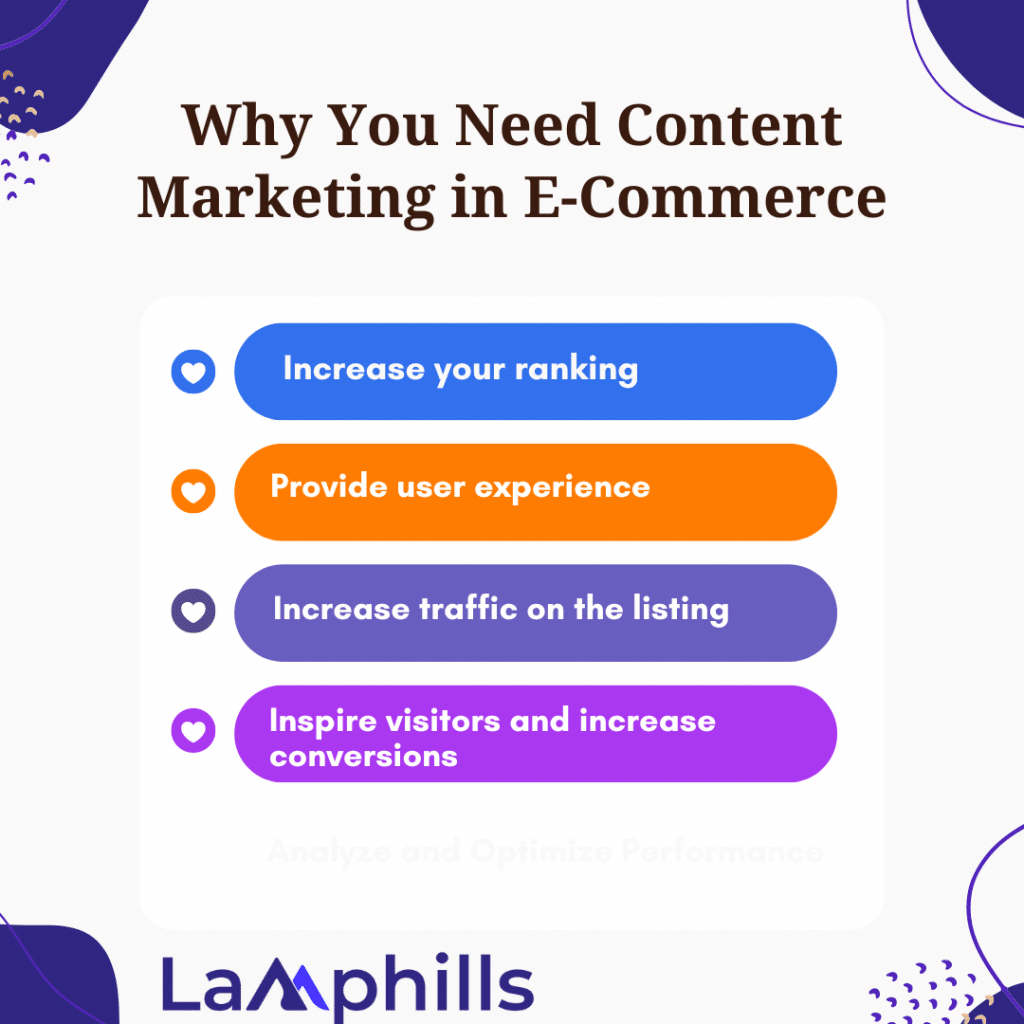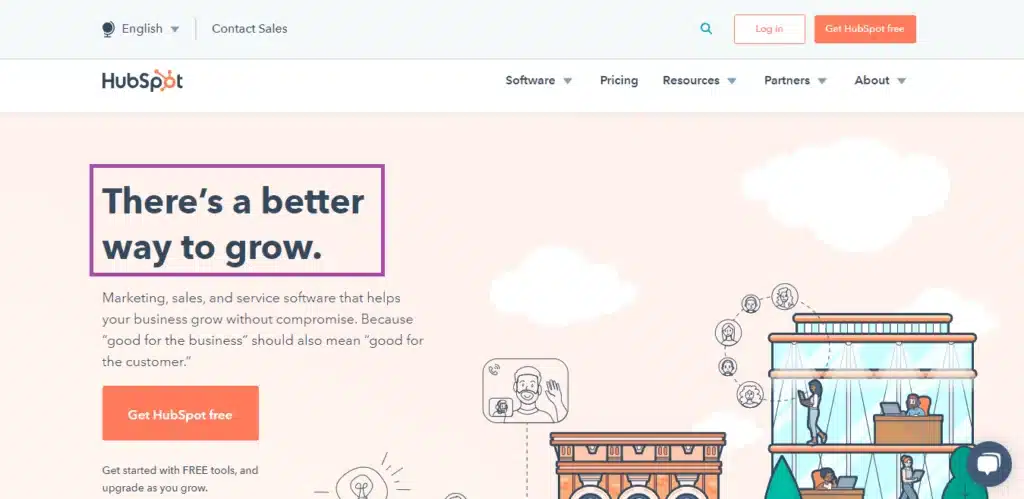I was ecstatic when I first learned about the world of e-commerce and the endless possibilities it offers. Little did I know that the landscape would change so quickly. Today, staying ahead in e-commerce entails keeping up with evolving trends and innovative strategies. In this article, I’ll provide views on the future of e-commerce content, to help you adapt to this changing industry. This is about preparing for what comes next, not just what is now trendy. Let’s look at the future of e-commerce content: trends and strategies you can’t afford to miss.
What is an E-Commerce Content?
E-commerce content is a collection of varied materials designed to entice potential buyers. Brands generate content to communicate information across multiple platforms and formats.
Key Takeaways
- Interactive content not only captivates users but also doubles conversion rates compared to passive content, providing valuable insights into customer preferences.
- UGC, which is trusted by 92% of consumers over traditional advertising, creates social proof and builds a community around your brand, enhancing credibility and customer loyalty.
- Personalized experiences, such as tailored product recommendations and targeted email campaigns, can significantly boost engagement and transactions, making customers feel valued and understood.
- Creating content that addresses common questions in a conversational tone and incorporating long-tail keywords can help capture the growing segment of voice search users.
- Templates for product descriptions, for instance, can streamline the creation process, ensuring all essential features, benefits, and SEO elements are included.
What are the Elements of an E-commerce Content?
#1. Title
It is critical to remember that the title is also a component of your content. The title adds great importance to search engines. But that’s not all; titles help you attract potential customers and stand out from the crowd.
#2. Images
E-commerce content includes both textual items and visuals. Images not only attract people but also help them understand the material. Pictures communicate in global visual languages. It quickly delivers the message and emotions.
#3. Videos
Diversify your content and include some videos. You can use short films to demonstrate the functionality of your product. For example, if you’re selling a hat, make a short video wearing it and explaining how it might enhance the overall look.
#4. 360 views
There is no negative side to selling things. You should display your product in 360-degree perspectives so that your visitors may see it from every aspect.
#5. Product Reviews
Many companies post product reviews to alleviate buyers’ anxieties and help them get the most out of the product.
#6. Product Comparisons
Buyer behavior differs from one another. Some people find decision-making easy, while others are unsure. As a result, product comparisons bring together those who are undecided and help them to the conclusion. In this way, the brand acts as a friend to the visitors, assisting them in difficult circumstances.
#7. Product Listing
A product page describes the specifications of a given product. It could be.
- Features
- Manufacturers
- Use
- Constituent Part
It is an e-commerce page that simplifies purchases by delving deep into product details.
#8. Information
Overall, content refers to relevant information, and relevant information is content.
In the form of a white paper or a blog post? It doesn’t matter. To generate value from customers, brands provide relevant information.
When Do I Need an E-commerce Content?
#1. Introducing a new product
Listing a new product generates new sales opportunities. It’s an exciting time for the corporation, with the potential for increased profits. Unfortunately, not all scenarios have pleasant endings.
Do you wish to reduce the failure ratio? Then you need to flex your core muscles.
#2. Communicate with customers
Customers are essential to any business. If you have great interpersonal abilities, you can form long-term partnerships. How can you accomplish this?
Well, content is the solution. You have a lot of knowledge that you can share with your customers. Let’s go down memory lane! Remember how pleased you were when your friends shared useful knowledge with you. The same processes occur in both corporate and client relationships.
Make your audience feel valued, and they will become advocates for your firm. Also, dedicated users forgive when things don’t go their way. They like to stand with a company during difficult times, just as friends do.
#3. Gain new customers
Traditional marketing is slipping out of favor. As a dynamic marketer, you must not lag behind the times.
Content marketing can be an efficient way to acquire new customers. It is critical to create well-written and informative covers.
- Current events
- Offering useful tips,
- Sharing interesting information about your industry.
You can also use your blog to share industry- or company-related content, such as forthcoming events. This strategy will help you reach a broader audience.
#4. Stay in competition
Since ordering with the click of a mouse became available, competition has exploded. Retailers cannot wow customers with a stationary store and a modular website. A well-planned website with retail content suited to consumer needs is required.
#5. Attract readers and search engines
The texts should appeal to both readers and search engines. You need to increase your visibility with content.
With the correct content, any retail business can make the most of digital platforms and a physical store as a showroom.
It is no surprise that 66% of all merchants use multichannel marketing. To engage frequent customers, brands need both a virtual and stationary presence.
Why Do You Need Content Marketing in E-Commerce?

#1. Increase your ranking
E-commerce is brimming with businesses and items like yours. However, if you labor your fingers to the bone for content, you can make a significant impact. If you focus on becoming SEO-friendly, you will experience a significant increase in visitors.
#2. Provide user experience
The content employs a superpower, making your goods appear deliverable. Include well-structured and required information.
Emphasize benefits, write outstanding copy, and make consumers’ searches easier.
#3. Increase traffic on the listing
Traffic boosts your chances of making a transaction and helps you raise awareness. Increased brand awareness provides greater opportunities in the future.
#4. Inspire visitors and increase conversions
Try to get into the customer’s head. Inspire visitors and convert them into buyers.
Where To Get Contents From
#1. Can you compose the text yourself?
As an online store, you may, of course, write your own website content. You can also unload the truck loaded with new garments from the current collections and reupholster the furniture yourself. It is conceivable, but will you achieve the same professional and high-quality results?! It seems unlikely.
#2. Outsource Content
Take this aspect of your marketing strategy off your plate. You’ll then have more time to focus on the rest of your online trading tasks. AI bots and technical specialists will carry out your briefing and provide you with the necessary documents as soon as possible.
#3. Guest Blogging
Guest blogging is when you invite someone from outside your firm to create a blog post for your website. The writer will typically work in the same business or be an authority on the topics covered inside that organization.
It’s not only about being friendly and shaking hands. You may build a network of invited bloggers and improve your SEO ranking. You can also renew and diversify your content by inviting new perspectives.
Before we begin to put the final pieces together, we should talk about different forms of e-commerce content, localization, and content promotion strategies.
Types of E-commerce Content
#1. Homepage Content

This content is your company’s calling card. The space and the user’s attention are both constrained. You must limit yourself to the vital facts and pique the buyers’ interest.
#2. Landing Pages Texts

Pages that readers land on have a clear aim, such as signing a contract or making a retail sale. Texts on landing pages aim to achieve this goal and include a clear call to action.
#3. Category Texts
Overview texts provide consumers with a fast orientation to the various products, encouraging them to linger and browse for longer periods.
#4. Product Descriptions
It is one of the most important aspects of retail content generation. Individual items and services cannot be described simply. These should pique the consumer’s curiosity. Also, include a call to action.
#5. Multilingual texts
Multilingual texts address people from several countries. It is an intelligent technique to broaden trading horizons. You also want to avoid communication failures when constructing one.
#6. Blog Posts
Blogging is a tool used in content marketing. It covers a wide range of issues as well as personal comments on a certain company area. The know-how is to share the brand’s tales rather than advertising it
#7. Social Media Posts
Short, concise posts have the potential to become viral. Marketers produce social media content to reach out to their customers. Most importantly, encourage people to like and spread your content.
#8. Infographics
In its most basic form, an infographic is a visual representation of data. It communicates information through design, typography, and artwork. Clarity, aesthetics, and, of course, current trends all play an important role here.
#9. Whitepaper and E-Paper
The detailed texts and preparation experts are available in the website’s download section. They include tests, evaluations, proposals, and ideas. Whitepapers and e-papers create more leads while highlighting your professional credentials.
How Should You Promote E-Commerce Content?
#1. Facebook Store
Facebook Store is an excellent approach to promoting your e-commerce website and items. It’s a simple and cost-effective approach for internet shops to implement.
#2. Sales + Urgency
Saving money makes people happy.
We all enjoy completing one-of-a-kind deals, and the brand benefits greatly from increased conversion rates. Although consumers enjoy a good discount, they may not necessarily rush out and buy a thing at the first opportunity.
Here is how you can create urgency.
- Show the number of people who are looking at a page.
- Display a clock, counting the minutes until the end of sales.
- Indicate the number of things left in a store.
- Attach a label for easy selling.
- Provide a free shipment or delivery.
#3. Instagram
Instagram is an excellent medium for publishing e-commerce content since it allows you to link products to your posts. Upload stunning photographs, use hashtags intelligently, and post at the appropriate times. You will make a significant step forward in developing a community interested in your product.
#4. Email Marketing
The advantages of successful email marketing are enormous. Your company can increase brand recognition and build trust. Emails are more direct and personal than social media posts. To get started, actively promote your blog and newsletter. Also, try to grow your subscriber list.
Consistency is essential here! It would be ideal if you provided your audience with exciting campaigns.
For example:
- Send welcoming messages.
- Exclusive discounts and offers
- Share related content.
- Be responsive.
- Send Wishlist Reminders
The Evolution of E-commerce Content
At the beginning of my e-commerce journey, the content was simple: product descriptions, a few photographs, and maybe a blog post or two. Fast forward to now, and the game has altered drastically. Consumers today want immersive, individualized experiences that extend beyond basic product information. This transformation has created new opportunities and problems for e-commerce enterprises.
Trend #1: Interactive Content
One of the most fascinating trends is the proliferation of interactive content. This form of content, which includes quizzes and polls, interactive movies, and augmented reality (AR) experiences, engages people in ways that static content cannot. According to a recent Demand Gen analysis, engaging content results in twice as many conversions as passive content.
How to Implement It: Consider adding interactive features to your product pages. For example, employ augmented reality to allow buyers to see products in their own environment, or design a quiz to assist them in finding the ideal product. These strategies not only increase user involvement but also provide useful information about customer preferences.
Trend 2: User-Generated Content (UGC)
User-generated content is an effective technique for increasing trust and authenticity. In my experience, using customer evaluations, images, and videos has dramatically increased my brand’s trust. Nielsen discovered that 92% of people trust organic, user-generated content more than standard advertising.
How to Implement It: Use a branded hashtag to encourage customers to share their social media experiences. Include this content on your website and product pages to create social proof. This not only generates trust but also creates a sense of community around your brand.
Trend #3: AI-Driven Personalization
Personalization has been a term for years, but breakthroughs in artificial intelligence (AI) are bringing it to new heights. AI can evaluate massive volumes of data and provide highly tailored content in real-time. According to Epsilon, personalized emails create 6 times more transactions than non-personalized ones.
How to Implement It: Use AI tools to evaluate client data and provide personalized product recommendations, content, and offers. For example, an AI-powered email campaign can make targeted product recommendations based on previous purchases and browsing history.
Trend #4: Voice Search Optimization.
With the growing popularity of smart speakers and voice assistants, optimizing for voice search has become critical. By 2024, it is expected that 50% of all online searches will be completed via voice. This transformation necessitates a fresh approach to content creation.
How to Implement It: Create content that addresses typical questions in a natural, conversational tone. Optimize your product descriptions and FAQs for voice search by including long-tail keywords and phrases that users are more likely to say than type.
I recall introducing AI-driven personalization for the first time in my e-commerce firm. Initially, I was suspicious about its impact. However, after implementing an AI technology that studied consumer behavior and preferences, I saw a substantial boost in engagement and revenues. Personalized product recommendations and bespoke content let my consumers feel understood and valued, resulting in greater conversion rates.
Using Templates for Efficiency
Templates might help you streamline your e-commerce content strategy. A well-designed content template can help you maintain consistency, save time, and guarantee that your content reflects your brand’s voice and goals.
Example: A product description template may have sections for essential features, benefits, customer reviews, and SEO keywords. This guarantees that all of your product descriptions are complete, SEO-optimized, and consistent in tone and style.
Conclusion
The future of e-commerce content is promising, but it will require staying ahead of trends and implementing novel strategies. From interactive and user-generated content to AI-driven personalization and voice search optimization, these trends are influencing how we communicate with customers. Using these strategies and technologies, you can create compelling, tailored experiences that increase engagement and conversions.
Are you ready for the future of e-commerce content? Which trends or strategies are you most excited to implement? Share your opinions, and we’ll talk about how we can all stay ahead in this ever-changing landscape.
Related Articles
- The Ultimate Guide To Writing A Winning Content Brief
- Brand Engagement: Meaning, Importance & Helpful Tips
- Proven SaaS Content Marketing Tactics for Boosting Engagement and Conversions
- What Is Authoritative Content? How It Is Used and Steps To Creating One
- Branded Content Marketing: The Powerful Strategy Big Brands Don’t Want You to Know






